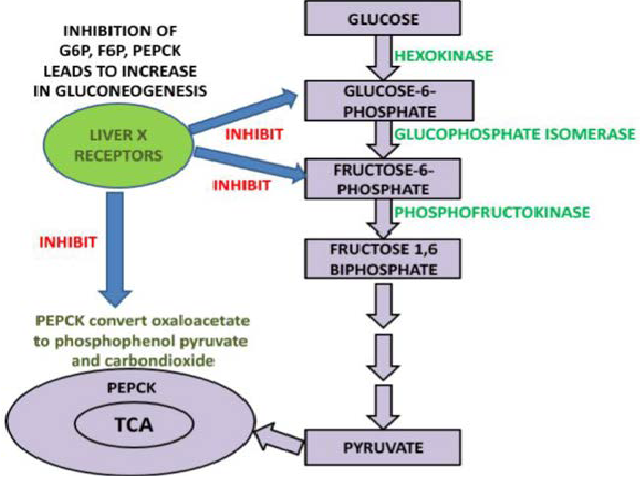Therapeutic Role of the Liver X Receptor in Modulation of Metabolic Diseases and Future Scenarios
DOI:
https://doi.org/10.5530/fra.2022.1.1Keywords:
Liver X receptors, Obesity, ABC transporters, GLUT4, Rate limiting enzymes (PEPCK, G6P, and F6P).Abstract
Liver X receptors (LXRs) are part of the nuclear receptor superfamily and are cholesteroldetecting receptors. LXRs are commonly found in two isoforms: LXR and LXR. LXRs were initially identified as orphan receptors from a rat cDNA library using an oligonucleotide probe. The regulatory activities of LXR in obesity are the subject of this review. LXRs directly operate on numerous target genes such as ABCA1, ABCG1, ABCG8, GLUT4, and other rate-limiting enzymes such as PEPCK, G6P, and F6P, and so play an important role in the treatment of obesity. LXR may interfere with obesity via several signaling mechanisms. The first is through ABC genes, which promote the clearance of excess bodily cholesterol via the lipid removal route from cholesterol-loaded macrophages and intestinal lumen. The second strategy involves boosting GLUT4 expression by increasing glucose absorption by peripheral tissues, and the third involves inhibiting rate-limiting enzymes PCPCK, G6P, and F6P, which eventually decrease hepatic glucose synthesis. LXR’s physiological activities suggest that it might be a promising target for obesity therapy
Downloads
Metrics





